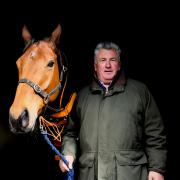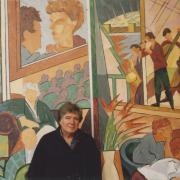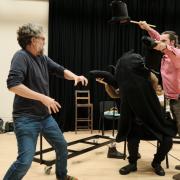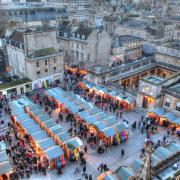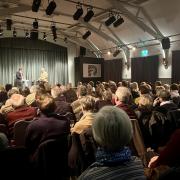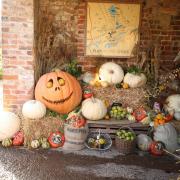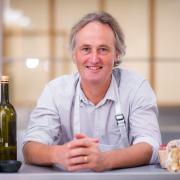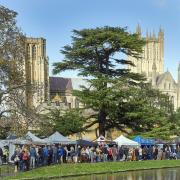Patricia Ackroyd is on a mission to help regenerate the wool industry in Somerset.
She is the managing director of Ackroyd and Dawson Limited, the Somerset company that produces quality tweed, woollen and worsted cloth from the 60 plus breeds of sheep and two breeds of British alpaca and she is also the founder of The Glastonbury Wool and Alpaca Festival.
Ackroyd and Dawson Limited’s MD Patricia Ackroyd talks to Charlotte Richardson about why the regeneration of the wool industry in the county is an issue close to her heart.
Can you tell me about your family’s connection to the British wool industry?
Starting at the turn of the 19th century, the Ackroyds on my father’s side had mills all over the Bradford area, and the Dawsons on my mother’s side, from the same area, started out as wool combers and became world famous cashmere yarn spinners. I later discovered they also had a vicuna (a relative of the alpaca) works in Bradford. My great-grandfather on my mother’s side, Herbert Harrison, was a weaving manager and overseer for Titus Salt Jr. at Salts Mill in Saltaire.
Why do you think it is important to try to regenerate the wool industry in Somerset?
Somerset has a wealth of sheep, with very good wool that is of a quality to use for garments and woven cloth, not just carpets and interior fabric.
In general, the wool trade has been the lifeblood of our country, and Somerset has no shortage of entrepreneurial skill and enthusiasm.
There are now many young people who are seeking a niche to engage their skills and energy, find good work and help the country to regrow. There are many adults who are looking to retrain and find new work. The machines that were once used in the woollen mills are in storage. Somerset has some ideal locations to restore, rebuild, reskill and move forward.
How do you think the Glastonbury Wool and Alpaca Festival, to be held on 24 and 25 August will help this?
Presenting a proposal or an idea on paper is one thing, showing it to people is entirely another. Once the public sees it and is able to have a go, doors open.
Tell me more about the event and what people can expect.
When visitors arrive at the festival they will be effectively taken through the cycle of the life of a sheep and its wool. They will have the opportunity of seeing sheep properly driven down the full length of the High Street by our Freeman and other invited guests.
The sheep will be taken to the Rugby Field where they will join the rare breed sheep in pens and the Shetland sheep.
There will be demonstrations of how farmers work with their dogs and sheep to bring them from field to field or into the barn.
There will be shearing and wool handling demonstrations to show the public how wool is skilfully taken from the sheep’s back. The public will be able to have a go at wool handling.
In the Artisans Hall and the Town Hall there are craft supplies and hand made fine pieces of work for sale. At the Demonstration Hall at St Mary’s church hall across for the Town Hall there are spinning, weaving, felting, peg looming demonstrations—and many others.
Visitors can watch, have a quick go or book an hour’s lesson at a small extra fee.
On Saturday, at the Rural Life Museum, there is our Fashion Show, which will showcase the amazing work of artisans from all over the country, including the Sheltand Islands and Northern Wales.
On Saturday Night there will be a community feast with clogg dancing to highlight the dances, many of which originated in the woollen mills as the wooden shoes did not create sparks to set alight the wool. On Sunday there will also be a local produce market. There will be local alpacas on display in the market place for public viewing. n
For more details see glastonburywoolfestival.co.uk




